We all know that Google and Facebook dominate the paid advertising industry.
Advertisers that have maxed out their target audience reach on these platforms need to look elsewhere for incremental gains.
That’s why we’ve created this guide: to help you start/continue diversifying your paid media mix.
Before we dive in, let’s review some of the benefits of diversifying your paid media spend:
- Your most engaged audiences may be spending more time on other platforms. For example, many would argue that business professionals are most open to business-related ads when they’re on LinkedIn, a professional-focused platform.
- Getting in front of your audience, across multiple platforms, complements the ads you’re running on Google and Facebook. The online purchase funnel is more convoluted than ever. You might need to remind a consumer about your product 10-20 times before they purchase. You increase your chances of getting in front of them more frequently if you advertise to them across all of the platforms they use.
- You minimize risk. Google and Facebook have both had their fair share of controversy when it comes to brand safety (especially when you bucket YouTube in with Google). Platform expansion allows you to lean on one platform more heavily when another platform is having brand safety, technical, or other issues.
1. Microsoft Advertising
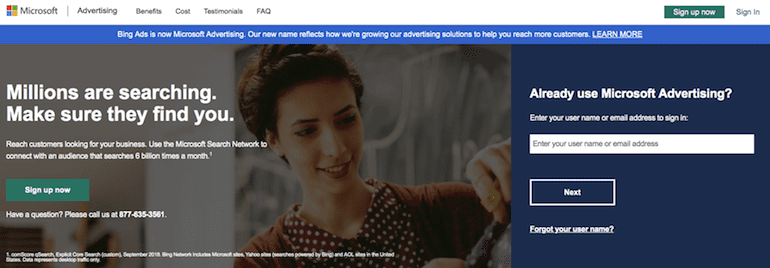
Microsoft Advertising, previously known as Bing Ads, includes the search inventory of two other memorable search engines: AOL and Yahoo. Though Yahoo, AOL, and Bing are used far less than their Google counterpart, they still have valuable users that can only be found on these engines and their syndicated search partners.
In March 2018, Microsoft Advertising had 34% of the U.S PC market share with 6 billion monthly searches. See the chart below for more global data on Bing/Microsoft’s advertising reach.
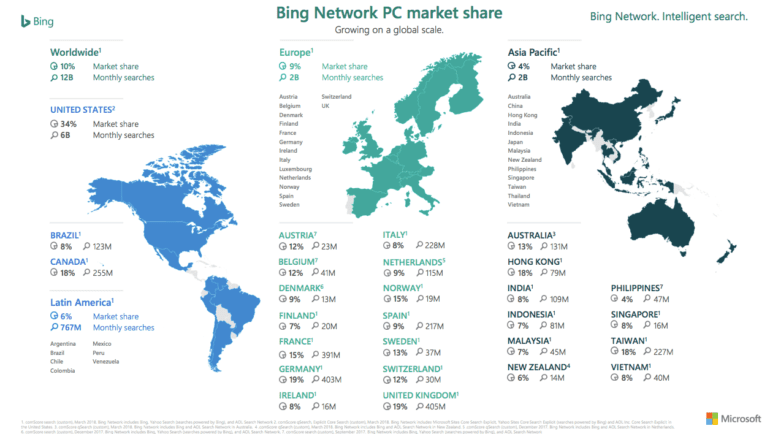
Even more notable, in terms of incremental growth for your brand, The Bing Network audience includes 60 million desktop searchers not reached on Google according to comScore, cited by Microsoft. Microsoft Advertising typically has lower CPCs compared to Google Ads, but with that fact typically comes a lower volume of traffic compared to Google.
You can sign up for Microsoft Advertising here.
2. Quora
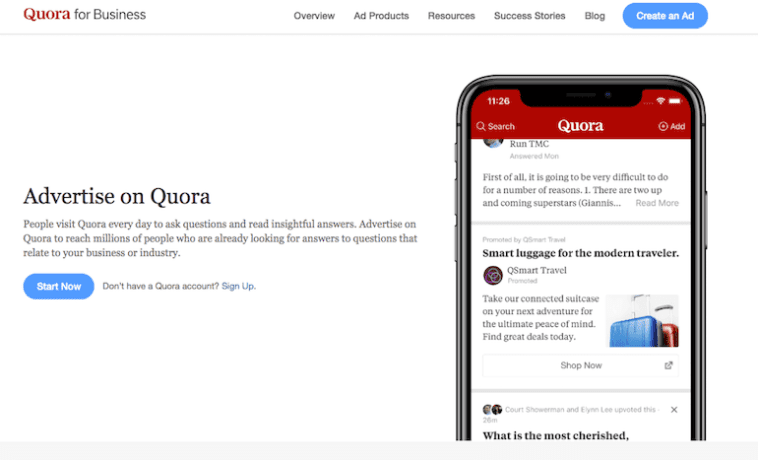
As stated by JD Prater, Ads Evangelist at Quora, “Quora is a unique, high-intent advertising platform, ideally suited to reach customers as they evaluate and research a product or service. People come to Quora to ask questions and to read and share insightful answers. This includes people looking for reliable information about your company, products, competitors, and industry. This provides advertisers the opportunity to influence people during the consideration phase of their purchase process.”
“The content on Quora is organized in the form of questions and answers. A question is tagged with one or more topics (e.g. small business or startups). With Quora Ads, you have the ability to target the content on Quora (contextual targeting) or target certain people based on behaviors (people-based or behavioral targeting).”

In terms of reach, Quora currently has a worldwide audience of more than 300 million monthly unique visitors.
You can get started with Quora advertising here.
3. AdRoll
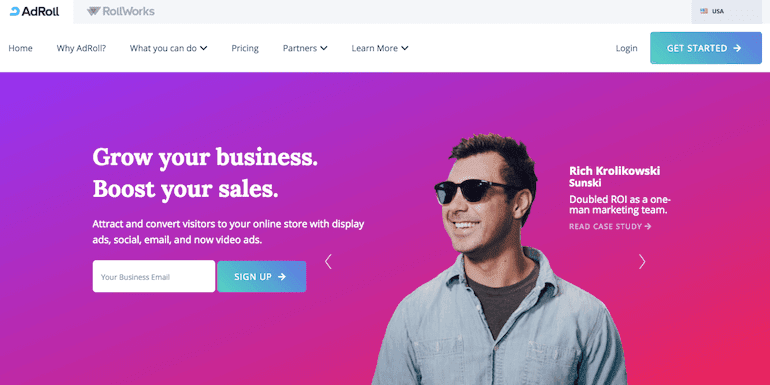
AdRoll is a well known and widely used retargeting platform. AdRoll reaches audiences across Google, Facebook, Instagram, and 500+ leading networks and exchanges. According to Adroll’s site, their customers average 5x return on ad spend.
AdRoll also offers other products outside of just retargeting. These include prospecting (programmatic display), email retargeting, and AdRoll Video Ads. AdRoll Video Ads are now available for both retargeting and prospecting campaigns and can be served in-stream and out-stream.
You can get started with AdRoll here.
4. Amazon
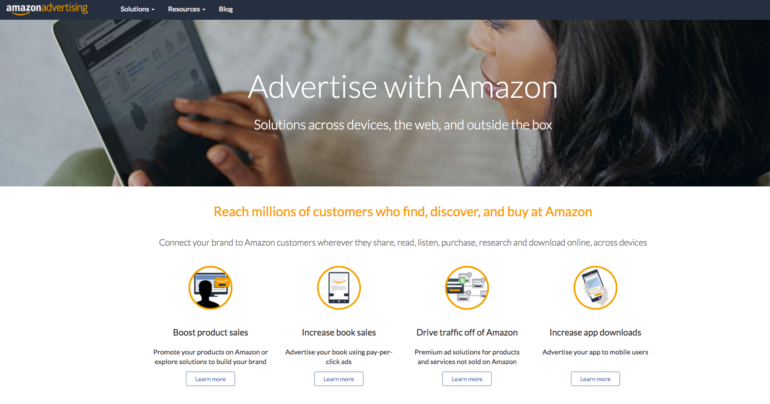
Amazon accounted for 43% of all U.S. e-commerce sales in 2016 and it is predicted to account for 50% or more of the market by 2021. Just the marketing platform alone accounts for $3 billion of North America’s advertising market, and is expected to hold $20 billion of the global market by 2020.
If you are an e-commerce merchant, you should be considering Amazon for your brand. That being said, according to an article from Forbes, Amazon is a gamble for small to medium-sized businesses, so make sure you’ve read up on the cons of this platform before committing. If you decide that Amazon is not currently a viable option for your brand, you should have a strategy for handling the effects of Amazon on your products. As the stats above suggest, Amazon is a disruption in the e-commerce space and cannot be ignored.
If you are ready to invest in Amazon, you should know their latest ad products include: sponsored products, sponsored brands, and multi-page stores. In addition, Amazon also offers Display ads, Video ads, Custom ads, and ads on the Amazon DSP (demand-side platform).
You’ll need to decide if you want to sell products directly to Amazon customers or if you want to sell directly to Amazon, who then sells your products to customers. With the former, you’ll use Seller Central. With the latter, you’ll advertise through Vendor Central. For more information on starting Amazon ads in either of these two platforms, check out The Guide To Starting Amazon Ads, by the Hanapin team.
You can get started with Amazon Advertising here.
5. Quantcast
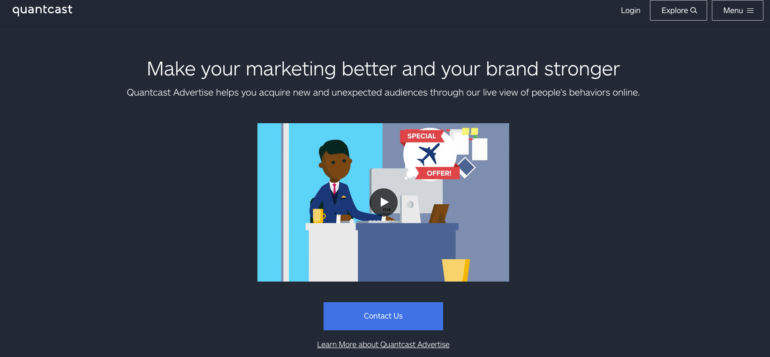
Quantcast has always touted its data set and audience insights to mold a new, untapped display audience for marketers. Driving visits and revenue to your site.
Quantcast offers a free data and audience insights tool called Quantcast Measure to help advertisers build their strategy, learn about their audience behaviors and personas, and learn about competitor audiences.
Quantcast also offers its paid advertising solution, which is a real-time, programmatic solution focusing on prospecting and retargeting.
Worth noting is that Quantcast also offers consent management platforms, calledQuantcast Choice and Choice Premium. While this isn’t an advertising platform, it’s certainly a useful tool for every brand that needs to comply with GDPR.
You can get started with Quantcast here.
6. BuySellAds
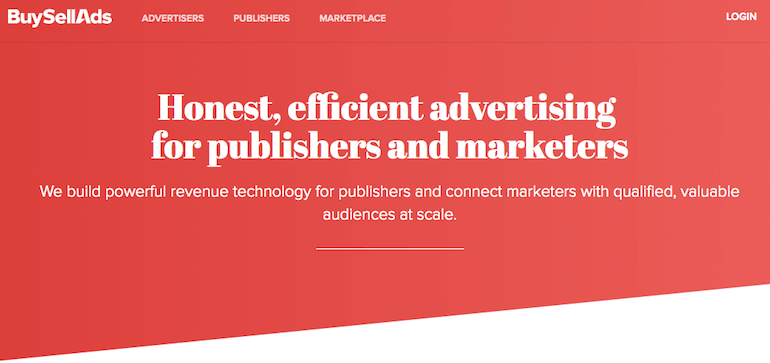
BuySellAds is by far one of the largest networks you can use to effectively disseminate your banner ads around the web. According to the BuySellAds team, they have a huge client roster, with over 4,500 advertisers using their native, display, email, and sponsored content placements. It’s a convenient marketplace with transparent processes, which provides a good choice of high-quality sites, especially in internet and tech niches.
To buy ads, sign up here.
7. Infolinks
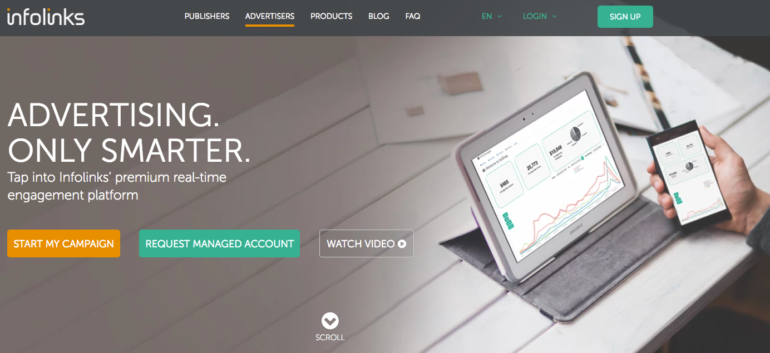
Infolinks is a marketplace that utilizes user intent and real-time engagement to distribute ads. Infolinks is the third largest publisher marketplace in the world and operates in 128 countries. Since its founding in 2007, Infolinks has advanced its product and ad units to focus on real-time engagement for relevant ads based on what and where the user is searching. There are now 6 types of ad units to choose from compared to their initial four.
- inarticle – “User-initiated expanding ad”
- infold – “Search and display, above the fold”
- inframe – “Display ads with an edge”
- intext – Native ads presented in a page’s text
- intag – Display valuable keywords based on the page content
You can submit your advertising information to Infolinks’ Self-Serve Marketplace here.
8. Instagram
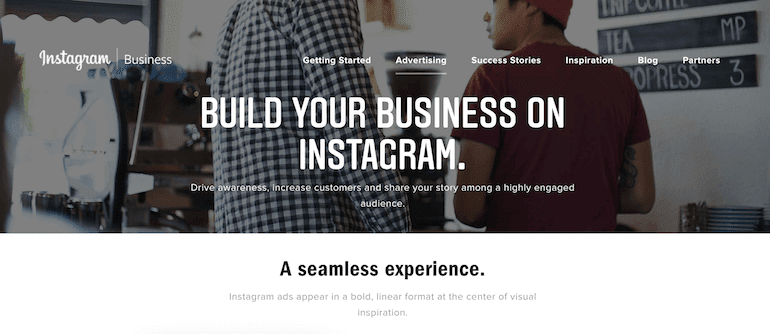
While Instagram is owned by Facebook, Instagram’s audience makeup and growth trajectory are noticeably different. Adoption of Instagram is higher for teens and usage is growing among adults:
- 72% of US teens say they use Instagram while only 51% say they use Facebook, according to a study by the Pew Research Center in 2018.
- In another study, Pew found that Instagram has experienced a 7 percentage point increase, from 28% to 35%, in adoption by US adults since Pew’s research in 2016. Facebook adoption was flat across the same time period.
In addition to these differences, Instagram’s ads are more focused on visual inspiration. As their site puts it, “Instagram ads appear in a bold, linear format at the center of visual inspiration.” Visual appeal is critical to advertising success on Instagram, so make sure to get buy-in from your brand’s creative team before launching an Instagram ad account.
9. LinkedIn
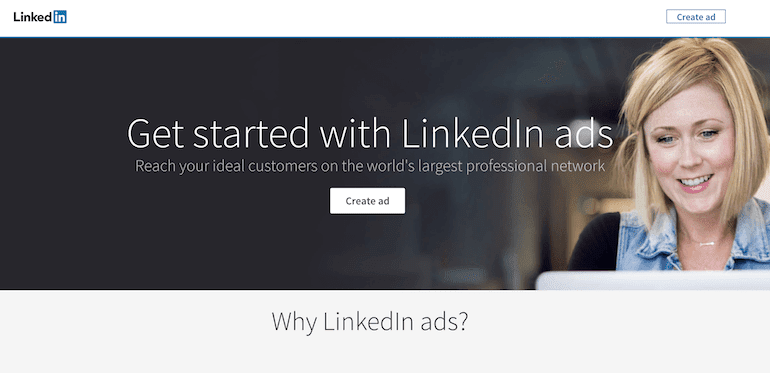
If your company is B2B, LinkedIn is the first ads platform you should test. LinkedIn offers business targeting options from targeting specific job titles to doing ABM (Account Based Marketing) focused on specific businesses. According to multiple studies/surveys from LinkedIn Audience 360 to Salesforce Advertising Index Report 2016, LinkedIn is the #1 platform for B2B lead generation, rated by marketers. Over 610 million professionals use LinkedIn and 4/5 of them drive business decisions.
There are three ad types on LinkedIn: Sponsored Content, Sponsored InMail, and Text Ads. Within those categories, LinkedIn has recently expanded its creative types to include video, which gives B2B advertisers a new outlet for telling their brand story on the most professional-focused social ads platform.
You can get started with LinkedIn ads here.
10. Pinterest
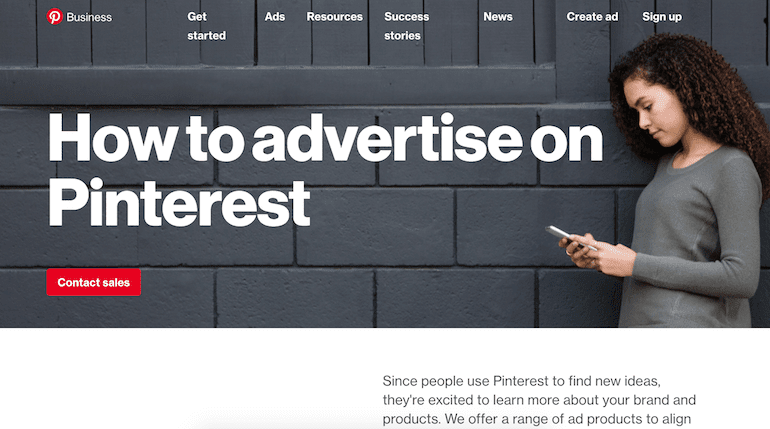
What sets Pinterest apart from other image-based, social platforms is the user intent: planning. According to the Kleiner Perkins 2016 Internet Trends Report, a whopping 55% of users shop on Pinterest. For perspective on that statistic, note that the next-highest platforms in that analysis are Facebook and Instagram, at 12% each. The intent to buy is high, but similar to Instagram, your creative is key. If you want to grab your audience’s attention on Pinterest, you’ll need to make sure your creative team has the time and resources to produce high-quality imagery and/or videos for Pinterest pins.
You can get started with Pinterest ads here.
Conclusion
As you can see, there are many alternatives to Google Ads and Facebook Ads that diversify your marketing mix. By integrating more channels into to your daily advertising strategy, you will incorporate a larger audience, build a funnel, gain more sales over time, and have touchpoints across all network types on the web (search engines, app stores, marketplaces, display, social media, and more).


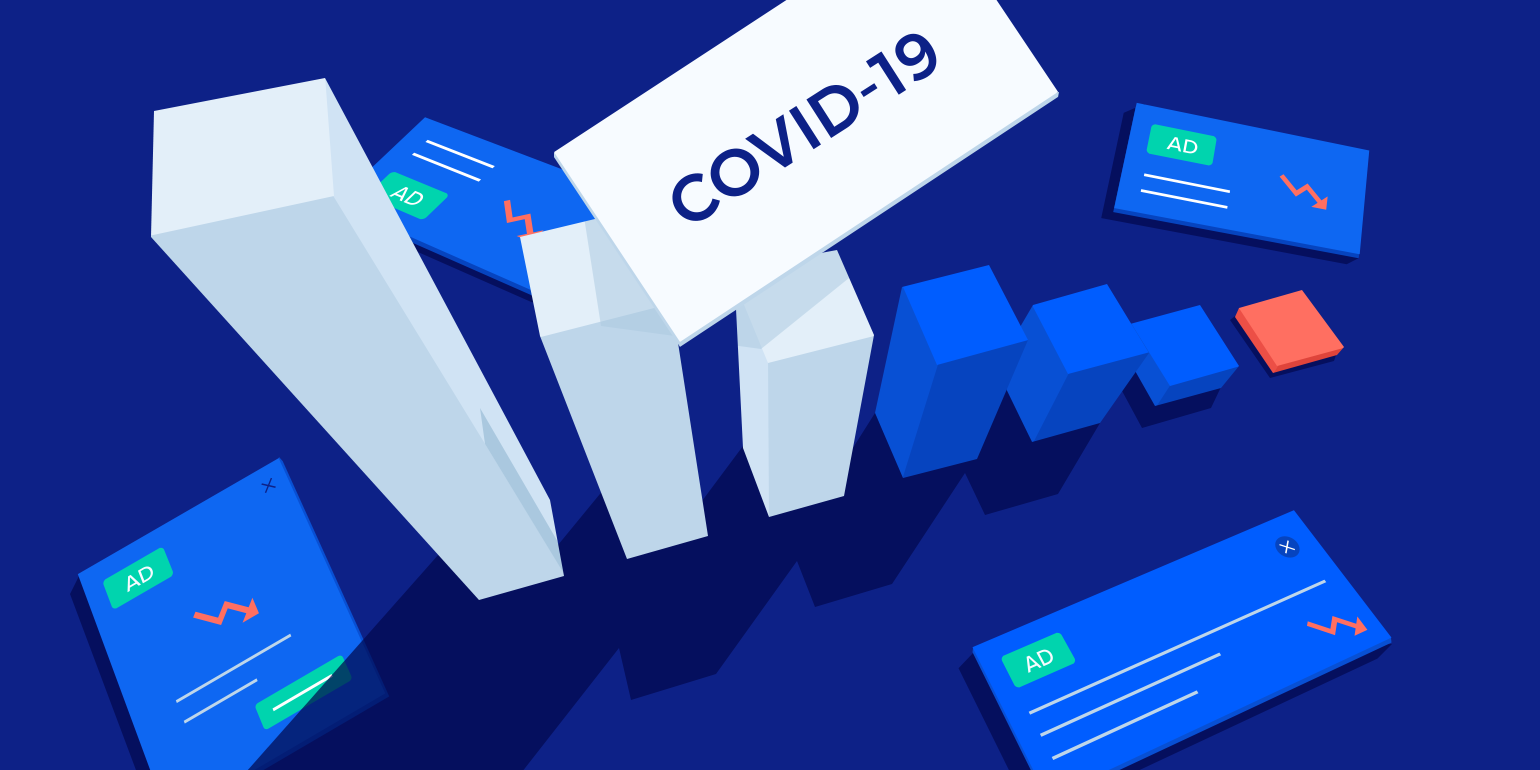
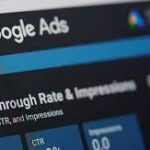
Leave A Reply